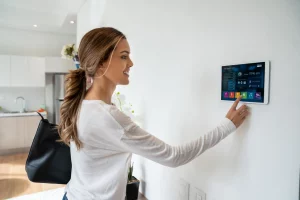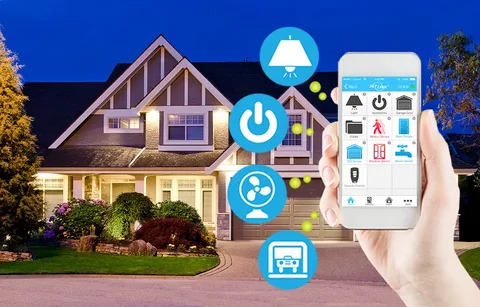Voice-activated home automation is revolutionizing modern living, offering convenience, efficiency, and enhanced connectivity. This article explores the latest innovations in voice-controlled technologies and their impact on household management. 1. Introduction to Voice-Activated Home Automation Voice-activated home automation utilizes voice commands to control smart devices and systems within homes. From lighting and temperature to entertainment and
Voice-activated home automation is revolutionizing modern living, offering convenience, efficiency, and enhanced connectivity. This article explores the latest innovations in voice-controlled technologies and their impact on household management.
1. Introduction to Voice-Activated Home Automation

Image by : Yandex
Voice-activated home automation utilizes voice commands to control smart devices and systems within homes. From lighting and temperature to entertainment and security, these technologies simplify daily tasks and enhance overall living experiences.
2. Integration with Smart Assistants
Smart assistants like Amazon Alexa, Google Assistant, and Apple Siri serve as central hubs for voice-activated home automation. They enable users to control a wide range of compatible devices, manage schedules, and access information through simple voice commands.
3. Expanded Device Compatibility
Advancements in home automation technology have led to increased compatibility with various smart devices. Voice commands can now control not only lights and thermostats but also kitchen appliances, home theaters, and even robotic vacuums, fostering a seamless connected ecosystem.
4. Voice-Activated Security Systems
Voice-activated home security systems enhance safety with features like voice-controlled door locks, surveillance cameras, and alarm systems. Users can monitor and manage home security remotely, receive alerts, and perform actions using voice commands for added convenience.
5. Energy Efficiency and Environmental Impact
Home automation contributes to energy efficiency by optimizing resource use based on occupancy and preferences. Voice-activated thermostats and lighting systems adjust settings automatically, reducing energy consumption and lowering carbon footprints.
6. Accessibility and Universal Design
Voice-activated home automation improves accessibility for individuals with disabilities or mobility challenges. Voice commands replace manual interactions, enabling independent control of home environments and enhancing overall quality of life.
7. Voice-Controlled Entertainment Systems
Entertainment systems integrated with voice-activated technology offer immersive experiences. Users can adjust audiovisual settings, play music, stream content, and even control smart home theater setups using voice commands for enhanced entertainment enjoyment.
8. Data Privacy and Security Measures

Image by : Yandex
As voice-activated home automation grows, concerns about data privacy and security become paramount. Manufacturers implement encryption protocols, secure authentication methods, and user consent mechanisms to safeguard personal information and prevent unauthorized access.
9. Advancements in Natural Language Processing
Natural language processing (NLP) advancements enable more intuitive interactions with voice-activated systems. AI algorithms understand context, accents, and dialects, improving accuracy and responsiveness to diverse voice commands in everyday use.
10. Future Trends in Voice-Activated Home Automation
The future of voice-activated home smart devices lies in continuous innovation and integration with emerging technologies. Anticipated trends include AI-driven predictive capabilities, expanded IoT connectivity, and personalized user experiences tailored to individual preferences.
















